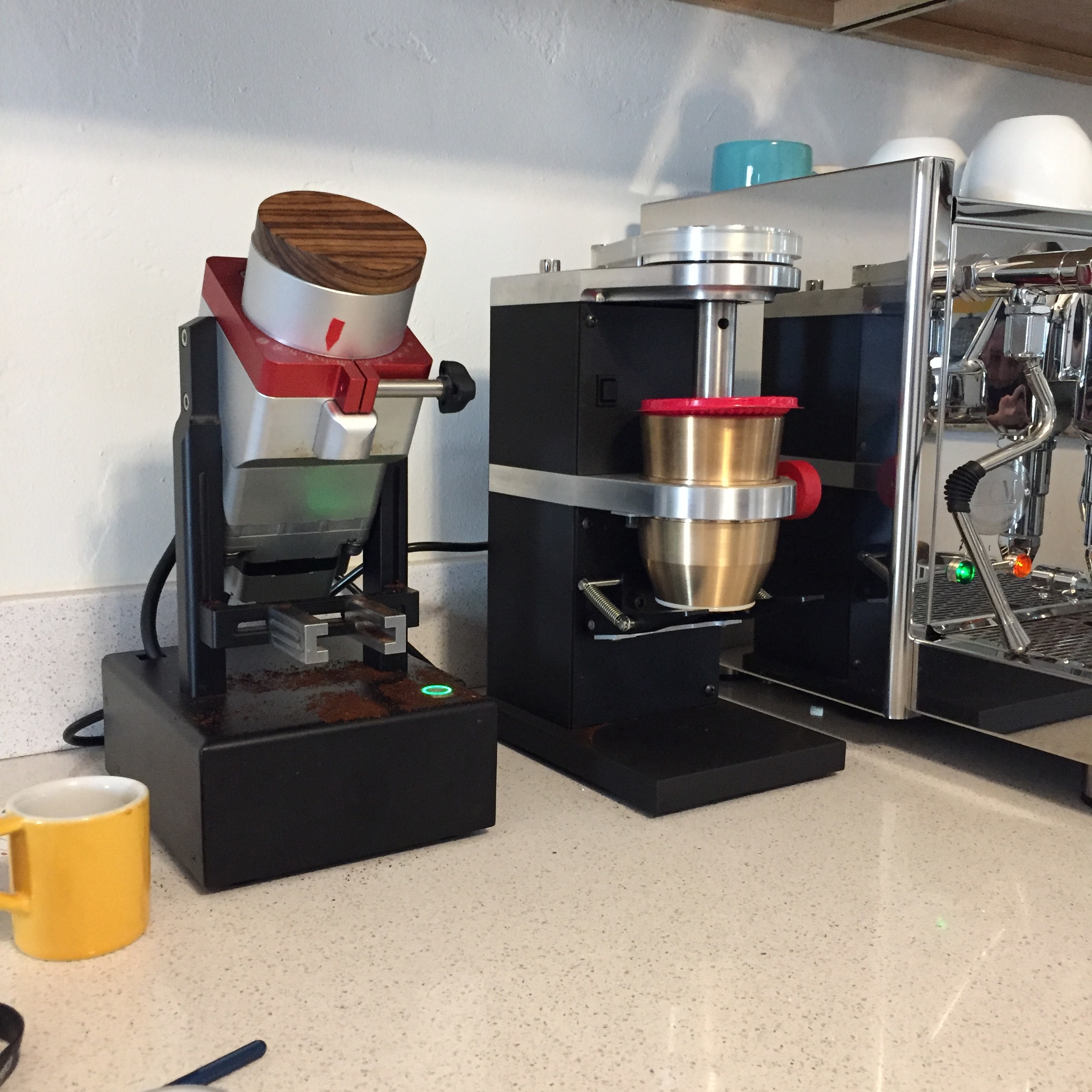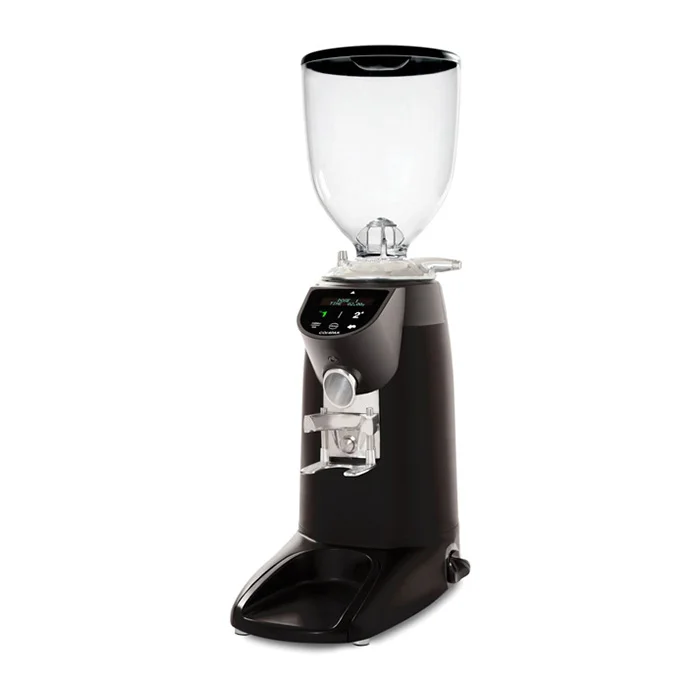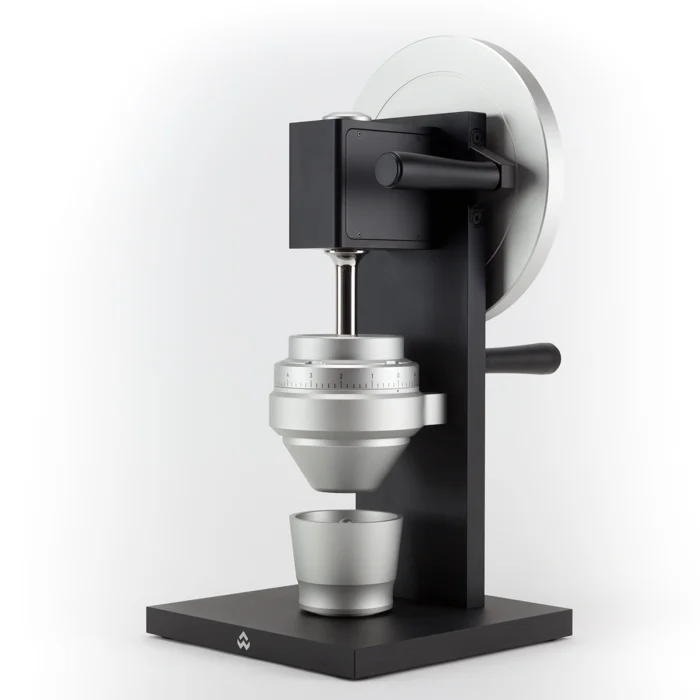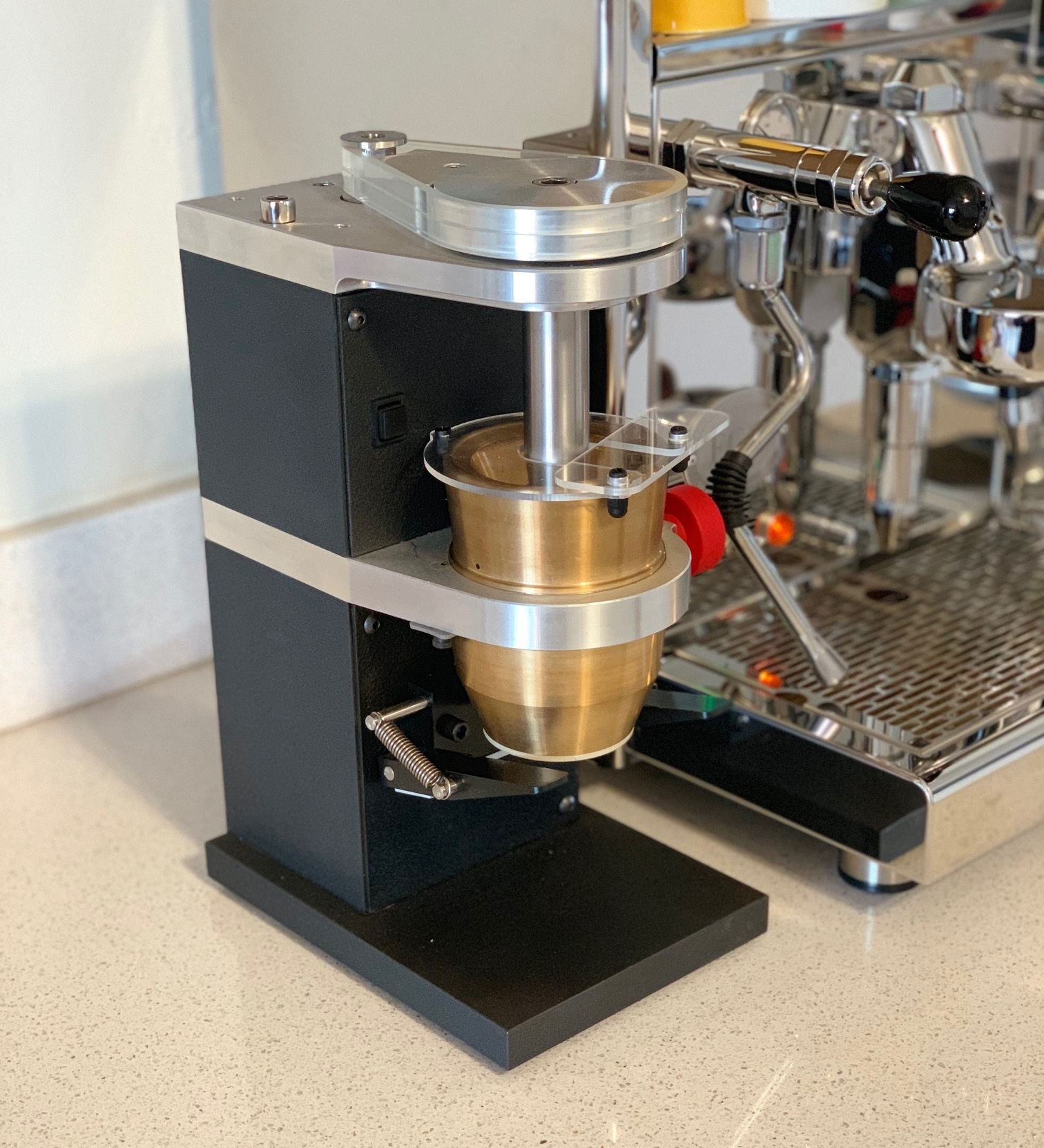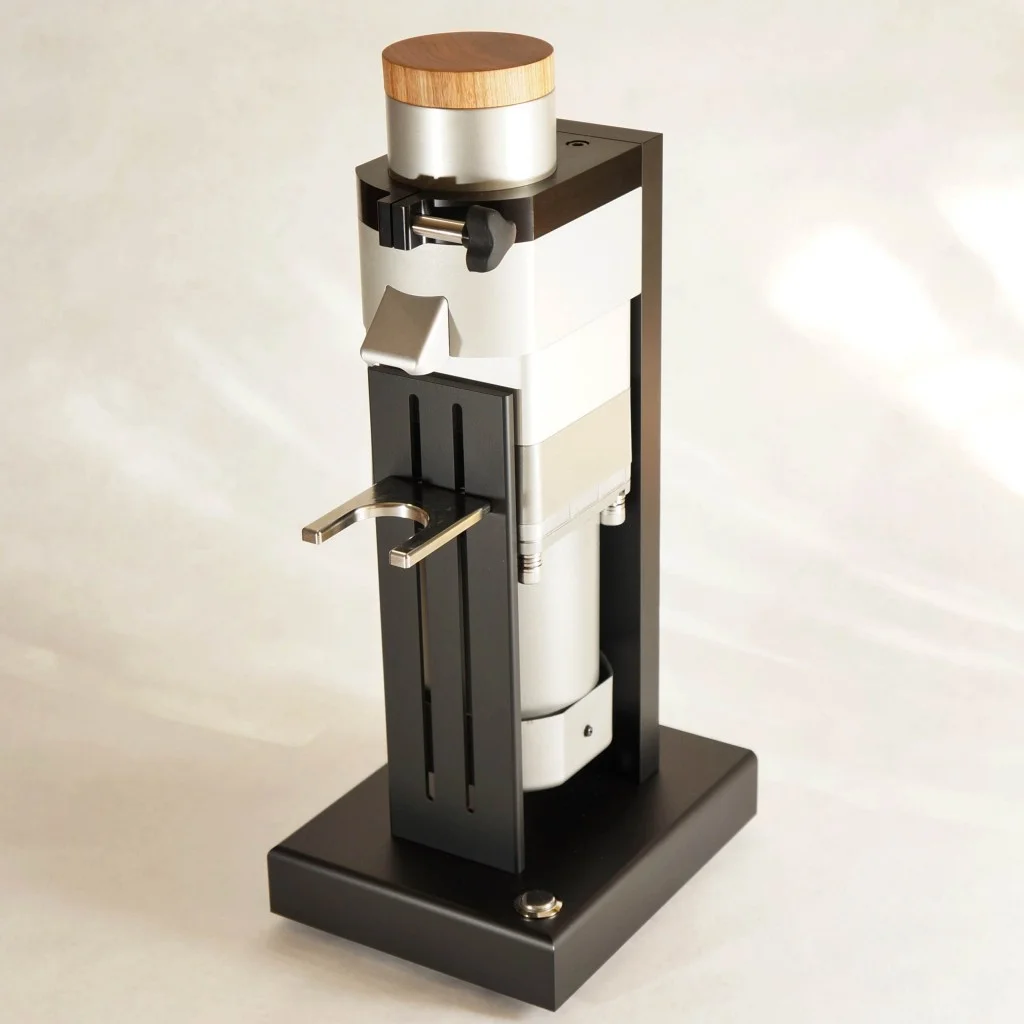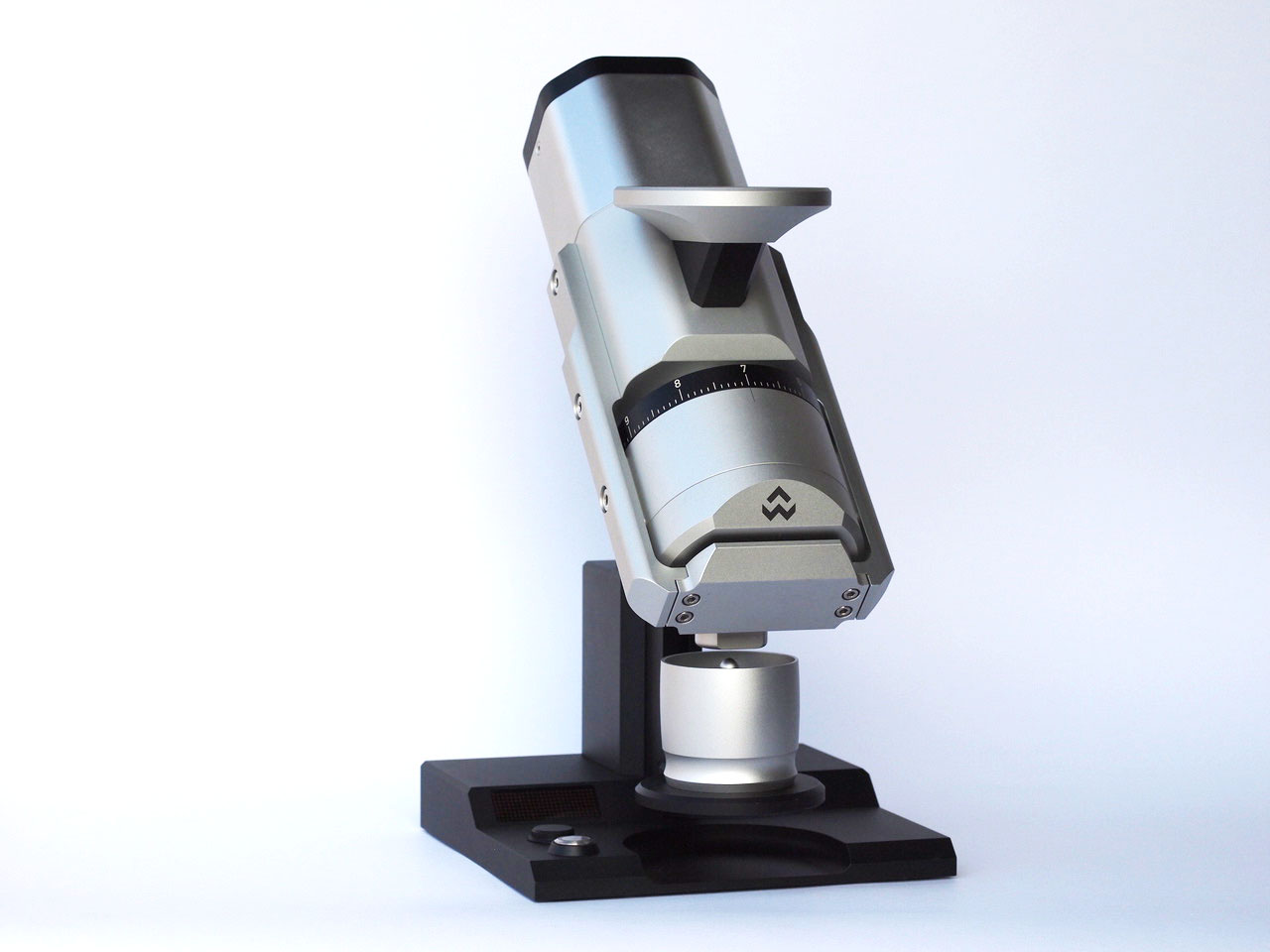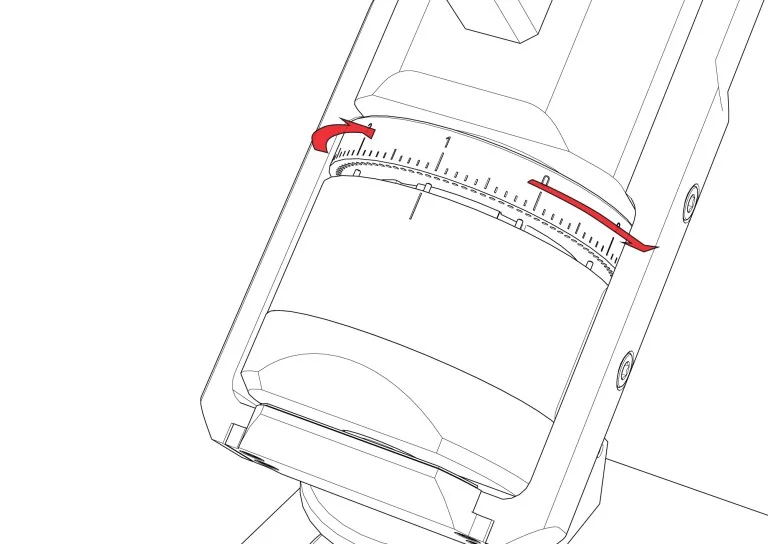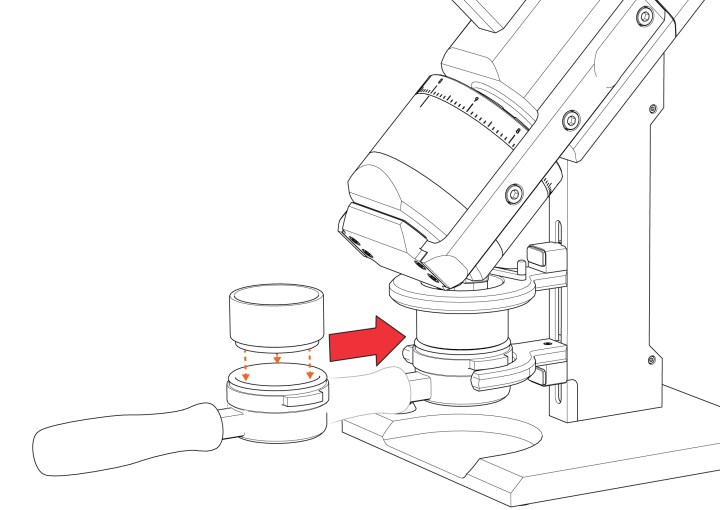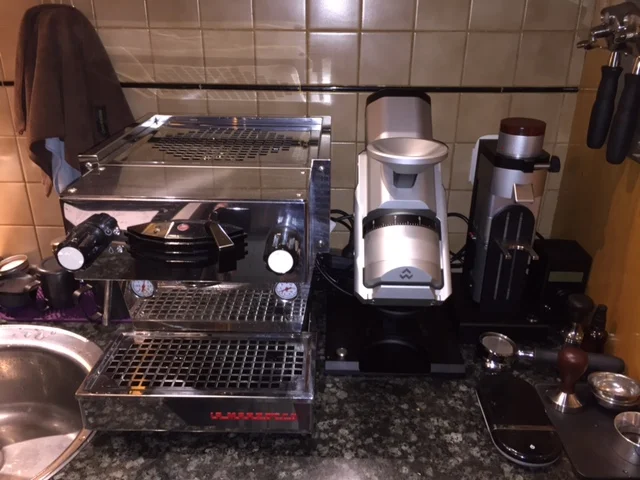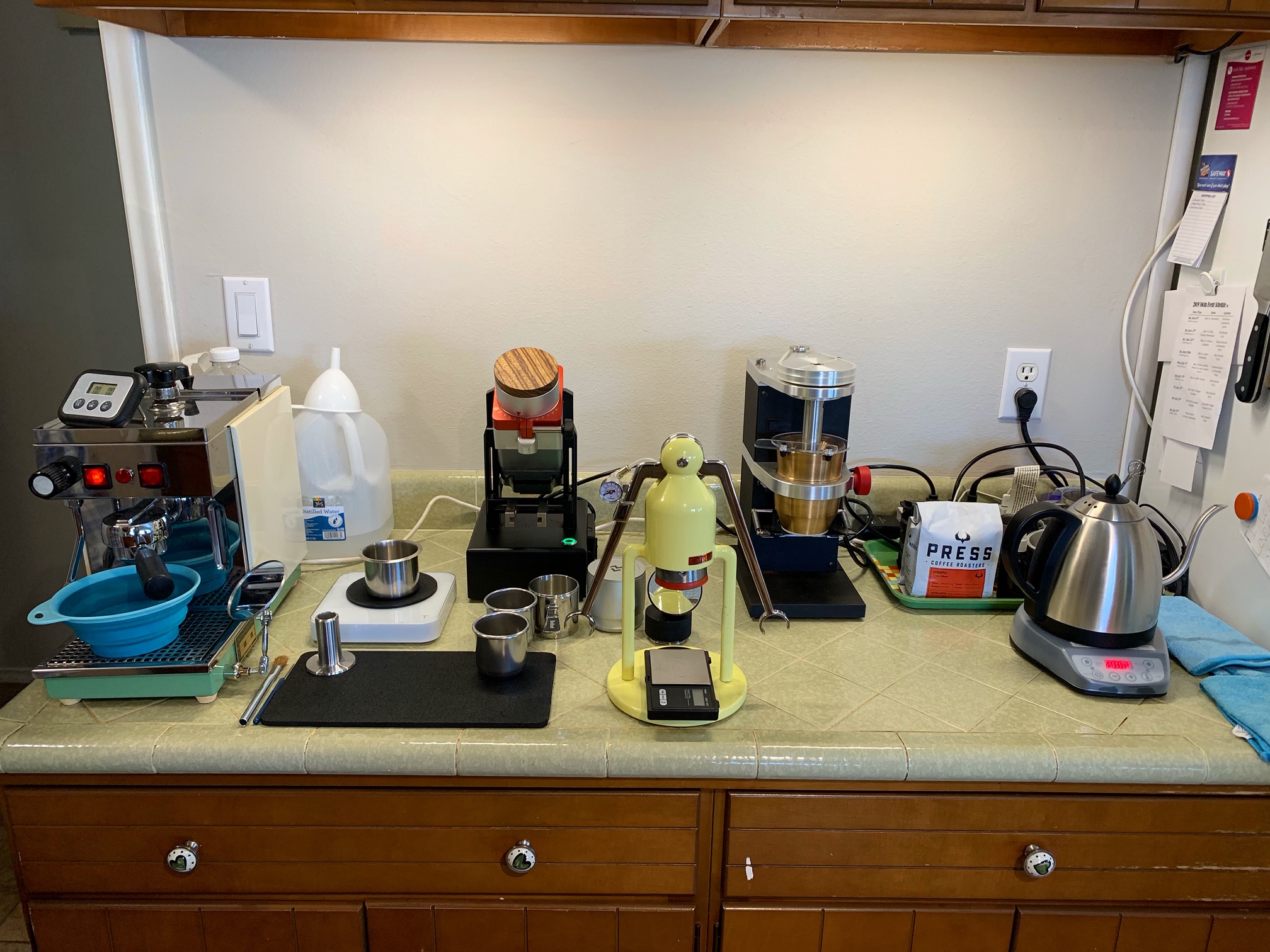The Compak K10 is not only large, it has a loud mechanical doser for clacking and thwacking.
I do a lot of talking about single dosing, and thought it might be useful for me to back up and explain what it is and why I’m a fan. In the (motorized) grinder world there are two basic dosing types: mechanical - the old school thwacking of the doser handle, as in the Compak K10 Pro Barista, and timed dosing or on-demand grinders that have presets to run the grinder for a certain amount of time to dispense an approximate dose.
Mechanical dosers have less electronics, do a great job of breaking up any clumps, and can dose consistently with practice or be put on timers to run for a preset amount of time, similar to an on-demand or doserless grinder. On-demand grinders are a little tidier looking, without the doser hanging off the front, a bit quieter without the thwacking, and can be faster, grinding straight into the basket. Some can be susceptible to clumping, and dosing consistency can be dependent on the fullness of the hopper. In a home setting, these grinders have more retention, requiring a purge to clear stale grounds.
Single dosing is the act of pre-weighing the whole bean "dose" or desired amount, and running it through an empty grinder. The theory or goal behind this is what you put in you get out. This is preferred by many home users because it provides less waste when dialing in a coffee since it is typically recommended to make grind adjustments with the grinder running, and you don't have to purge grinds held in the grinder to get to the grinds at the new setting. It is also preferred in the flexibility it offers in being able to adjust dose from one shot to the next, controlling variables, as well as the ability to change coffees or be working with multiple coffees at a time.
Personally, I like single dosing:
So I'm not grinding more than I need.
I'm not wasting coffee when making grind adjustments since I'm running an empty grinder.
I'm also not wasting coffee by purging old grounds - grinders with a lot of retention are okay in a cafe environment where they're never sitting in the grinder for very long. But in the home if you're only pulling a few shots each morning, you'll want to purge any now stale grounds retained in the grind chamber from the previous session.
The flexibility to switch between coffees. I enjoy having two coffees going at one time; maybe one is a more of a comfort style coffee or one that's good in milk, and the other is a very lightly roasted single origin fruit bomb that makes a zingy straight shot.
Currently, there are a few grinders that do a great job of single dosing, but relatively few are in the "Titan" class or upper echelon of grind quality and consistency. Typically this "Titan class" of grinders is reserved for commercial units, which generally don't shine when single dosing. Here's a look at the few exceptions that are made for single dosing, as well who should buy each model.
Lynn Weber Workshops HG-1 Hand Grinder
Besides the Orphan Espresso Pharos, the HG-1 is the least expensive, top-tier, single dosing espresso grinder there is, but... you have to power it yourself. Although the Pharos is capable of stellar grind quality and cannot be out performed for the price, I cannot endorse it simply because of some of the ergonomic shortcomings and how frustrated I would be trying to shake the grinds out of the hole in the bottom, into a catch bin, and then transfer them to the basket. The HG-1 overcomes this by including their blind tumbler which serves as the catch bin and also a vessel to break up clumps and assist with distribution and dosing neatly into the portafilter.
Once broken in, the grinder produces excellent quality grinds in a very home friendly footprint that won't leave you without coffee if the power goes out. It does take a little bit of effort, especially on lighter roasts and/or harder coffees, but overall, the flywheel does a nice job of making this approachable and stable. Like winding a manual mechanical watch, the process can be very satisfying and rewarding from a tangible and tactile sense. This reward for your labor, though, is why you tend to see more of these go for sale on the forums than any other grinder; simply because some tire of the work needed. For the 1-3 shots I pull on most days of the year, this grinder would be more than fine, and the workflow would not be any slower than with my K10 PB today. It's the if you needed to ever pull a lot of shots or wanted to put a hopper on the grinder that's limiting.
Pro's and con's of manual grinding aside, this grinder brings titan-level grind quality into the home for less than $1000, courtesy of the 83 mm conical burrset. I thought long and hard about purchasing one of these for my own use. Although I am happy with my choice of a modified K10 PB, I don't think this would be have been a wrong one. This grinder does generally require a spritz of water (RDT) or two, and either a really good routine with the blind tumbler or the use of WDT as well. Available for $985.95, from Lynn Weber Workshops.
Who Should Buy
This grinder is perfect for those that are:
not in a hurry
will not be pulling a number of shots back to back or a high volume of shots each day
and that don’t mind the more connected, manual ritual of hand grinding.
Cons
The act of hand grinding is laborious, especially for lightly roasted coffee.
Some have reported alignment concerns
RDT and WDT must be performed to mitigate static and normalize distribution.
Pros:
Excellent grind quality for the money
Very attractive
Overall well made
Where I used to consider a giant black hole in the market, the Niche Zero now exists. This grinder is really exciting for the home user as a true single dose specific grinder with a very home friendly footprint at less than $1,000. Using 63mm conical burrs, many have said this grinder performs on par with “Titan” conicals such as the Compak K10PB and others, straight out of the box. The looks are a bit polarizing to some, though I think it’s safe to say they’re not offensive in the least, and you absolutely cannot argue that it brings a very home appearance, and more importantly, footprint. Speaking of home use, it’s also very quiet, which is a big concern for many. The only real shortcoming of the grinder can be the workflow, depending on your usage, equipment, and grinding needs. The open spout is designed to accommodate all grind styles and devices with its included ground catch cup, but that also means, most have been left to their own devices to come up with a hands free or directly into the portafilter approach for espresso. A simple search will turn up plenty of solutions and videos to illustrate.
Who Should Buy:
Anyone seeking a lower priced alternative to nearly everything else on the list, those with space constraints, or those simply seeking an easy to use single doser at a more affordable price.
Pros:
The lowest priced motorized single dosing grinder
Very home friendly footprint and design
Quiet
Great performance and grind quality
Available in white or black
Cons:
Will typically require additional tools (funnel), transferring of dose, and/or WDT for espresso
Appearance is bland to some
Potential limited availability after first run is sold through.
Arguably the inventor of the top of class, single-dosing category, I had previously left the M3 off this list due to lack of information and understand of the grinder and how it compares to the others. However, as I’ve discovered in my review of the M3 grinder here, here, and here, and ultimately in my review of the newly updated and upgraded M4 grinder, it now belongs on this list more than ever. As I’ve stated in those reviews, at this level, all of these grinders are really quite excellent, so items like aesthetics, usage, and workflow can be differentiating factors, and workflow is really what sets the M4 apart. Of the single dosing options, the M4 is the only grinder that does not require RDT, WDT, redistribution, or dose transferring. This not only simplifies the process, but can actually improve the flavor of the coffee, by pulling it sooner after it is ground.
As of July 2019, it’s also one of the few options on this list that you can readily purchase. With the Kafatek options sold in limited batches and the EG-1 currently showing “out of stock” and reportedly undergoing some revisions (The EG-1 is now in stock 7/19), the M4, might be your only choice in the top of class, motorized, single dosing espresso grinder category. The Versalab M4 sells for $2,970, with dosing hopper(s) and portafilter holder sold optionally.
Who Should Buy
As I’ve stated many times, any of these options are really great, but there are some key differences that may be the deciding factor including:
Workflow - the M4 is designed to use the strike off or vertical tap settling method. The workflow of the M4 is the simplest and most straight forward of any single dosing grinder on the market. It simply doesn’t get any easier or faster.
Those looking for a small form factor or different aesthetics than the Kafatek or LWW options.
Those seeking the ability to volumetrically dose the grinder for convenience or speed in higher volume settings.
Cons
Slightly louder than the Kafatek Monolth grinders.
Grind fineness scale is user applied.
I personally have not verified how well the portafilter holder works with non-commercially standard sized (58 mm) portafilters.
Pros
No need to RDT, WDT, use grooming tools, or funnels.
Very attractive, great build and grind quality
Readily available
Dosing hopper option
Great PF holder
Commercially rated
The only hybrid (DRM) burr set grinder on the market.
Kafatek Monolith (Flat/Conical)
There’s no arguing that the purpose built, top-tier, single dosing KafaTek Monolith grinders helped to change the modern landscape of single dosing options. Made in pre-ordered runs by a hobbyist and not a company, the Monolith is one man's quest for everything you could possibly want from a grinder. Made to exacting levels of precision and craftsmanship and tested both quantitatively and qualitatively before shipping, these grinders represent a real benchmark that has pushed the single dosing market forward in recent years. Now available in three versions: conical, flat, and flat MAX, the Monolith’s have received running changes and improvement since the first release to improve workflow and better suit the end user.
The Conical version is said to be a little cleaner and more tidy with grounds than the flat and is arguably a bit more versatile than the acidity favoring Flat option. Personally, I would love to have both, and if I had to choose, I'm not entirely sure what I would do. With a spritz of water to mitigate static, retention levels are nearly non-existent and the ergonomics and well thought out design are sublime to use. I touched on the Monolith Flat pretty heavily in a previous post, so I won't get too carried away there.
The only real drawbacks to the Monolith family are availability, they seem to sell out within minutes, with multiple reports of people religiously trying to get one on multiple releases only to come up short. The other is that the workflow does require additional steps, typically found with single dosing grinders: WDT, a palm tap to get all the beans through, a tap of the chute to knock stray grounds, funnel to minimize mess, WDT, grooming tools, etc. Some really like this ritual and the tools and steps associated, though it does create more labor and time required to prep the basket.
Both the conical and the flat are now available with some additional options and burr choices, as well as an even larger, 98 mm burr set version of the flat, called the Flat Max, and they typically sell out through pre-order windows, so be sure to check the KafaTek site and get your monies ready. Pricing ranges from $1950 for the conical to $2450 for the Flat, and $3250 for the Flat max with many additional customization options available.
Who Should Buy
Those seeking excellent grind and build quality with a choice of burr sets.
Don’t mind having to RDT, WDT, and/or redistribute grounds. Some have reported not needing these steps, and that will certainly depend on the type of coffee you use and your climate. In my experience, these steps are necessary, even on a broken in grinder.
Cons
RDT and WDT are required in most cases.
Availability
The industrial machined look may not be for everyone
Can be messy without a funnel.
Pros
Excellent grind and build quality
Have the choice of conical or flat burrs
A proven performer and all around excellent grinder
Quiet
The EG-1 was announced (and teased) long before the KafaTek offerings, building anticipation for it to be the champion of single-dosing specific motorized grinders. With 80 mm flat burrs, adjustable grind speed control, and adjustable portafilter rails, the EG-1 was actually being targeted towards retail and cafes, rather than just home applications. It builds on much of what has made the HG-1 so successful with minimal retention, high-quality, uber-clean design, and focus on their blind shaker/tumbler system to alleviate clumping and (potentially) reduce the need for WDT.
The Home-Barista world was waiting on pins and needles for this to be that grinder to fill the black hole mentioned above, but then the price was announced. At $3495 this was no longer an option for most and the highest priced option in this class. To reduce the appeal to home users even further, the KafaTek offerings were announced, launched, and delivered in between the announcement and first delivery of the EG-1 with pretty much the same feature set at $1000 less. To give credit where credit is due, the EG-1 is targeted at very specialized cafes, labs, and commercial environments, and advertised to withstand such demands. Interestingly enough, the KafaTek models are rated such that one could predict they could withstand the same abuse.
Competition aside, the EG-1 is a very attractive, well-built, and well thought out grinder. The portafilter/blind shaker holder and dosing ring is very clever and versatile, and the whole package is very futuristic looking. The EG-1 is marketed as providing all the control one could ever desire for both drip and espresso grinding duties. There was an early concern that prototype units needed Allen key to adjust grind fineness, but it appears a clever system has been designed to address this by pulling the collar up, rotating to adjust fineness, and then returning to set the grind size.
The grinder is much larger than it appears in pictures, at least to me. Definitely larger than the KafaTek Monolith. It did have a somewhat polarizing external power source and motor speed control module, that has now cleanly been incorporated into the base of the unit.
Overall, I have not used an EG-1, nor even seen one in person. So, what has been said here is somewhat subjective, and summarized by the research and feedback I have heard and read. I'm sure it's a fantastic grinder, but I just find myself having difficulty getting really excited about it given what the other options provide for a similar or lower price. I just don't know how one can justify the price increase in any way possible. But then again, we are discussing discussing price increases between $2500 and $3300 coffee grinders.
Who Should Buy
The EG-1 provides a large, flat burr alternative to the Kafatek Monolith. I’m not sure if usage would be much different between it and a Monolith Flat Max, other than the EG-1 is targeted at commercial usage, whereas I’m not sure if the Kafatek offerings are NSF rated. So, if you want a large flat single doser that may since commercial use, this is the ticket.
Cons
The largest of any of the options
Not currently available
The most expensive option
Pros
Great build and grind quality
It looks like it’s from the future
Commercially rated
A testing session between the Monolith Flat and the Versalab M4 using two different Ethiopian coffees and the Cafelat Robot as the machine yielded a draw, pulling shots so similar we were unable to identify and pick a winner.
Overall grind performance is excellent across any of the grinders on this list, as it should be. And I continue to stress that specifically because, in the above $1,500 range, it’s the workflow that seems to differentiate the grinders more than anything. Extraction yield percentages and burr types are certainly differentiating factors as well, but even that is not as cut and dry with grinders like the Versalab M4 able to hit 25% extraction yields with a hybrid burr set, so I won’t get into those politics here.
It’s an exciting time to be a single dosing home user with the increased options found on this list and a few the I omitted. I left off the $6,500 Ceado E37Z Hero because as far as I can tell it’s not necessarily doing anything different than any of the others mentioned here yet costs twice as much, so I just haven’t even bothered to see what the feedback is. I also omitted the $1975 Helor Stance Motor because it appears to now be sold out. Initial reports of it were positive, and I’m really excited and hoping to see more like it and specifically more options in the price range between it and the Niche Zero.
At this price point, I truly believe it’s more about finding the right grinder for you and your usage and preferences, so I tried to keep this list directly addressing the pros and cons of each, as I’ve seen, heard, and used them. To be honest, it’s a really tough decision that I can’t say for sure what I would do. Though I’m thankful I’m not in the situation of having to choose with one presently on my counter.
This is an update to a post that originally ran in November 2016, with the previous comments below, which I would encourage you to read and reach out and share your thoughts or questions as well. Thanks for reading.
